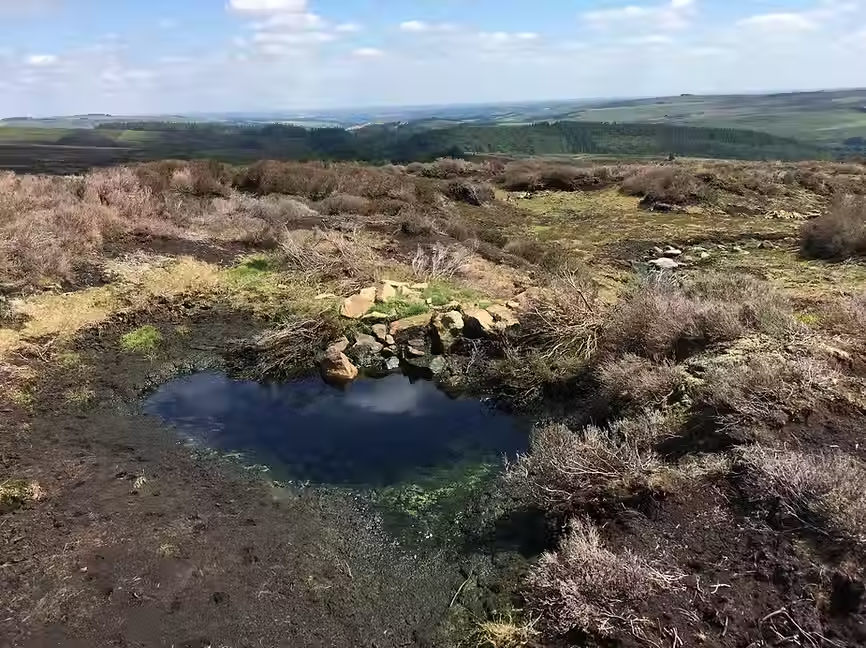Peatland Management
Peatland is the crucially important foundation on which many of our
most important moorland ecosystems are based, but in recent years we have begun to realise just how vital peat is as a means of safeguarding against climate change and providing clean, safe drinking water.
In Britain, extensive areas of peatland have been damaged by man over the past few generations. The advent of commercial forestry in the uplands has caused untold damage, and drainage for agriculture
continues to harm sensitive peat-forming vegetation. Over time, this has led to dramatic erosion and loss of stored organic Carbon into the atmosphere, contributing to greenhouse gas emissions on a vast scale.
When peatland is healthy, it gathers and stores atmospheric Carbon,
retains water to reduce the risk of flash-floods and provides a fantastic habitat for all kinds of rare and specialized wildlife, including waders and carnivorous sundew plants.
The management of heather is easily compatible with the conservation of peatland, and the Trust’s work frequently focuses on delivering the latest environmental science to the land managers and land owners who are making decisions about the uplands.
Integrating the best peatland conservation techniques into existing land uses like grouse production or agriculture represents the cutting edge for research and development in the moorland world, and the Heather Trust is involved in several practical, hands-on projects to bring science to the people on the ground.
Additional Resources and Links
Members' Briefings
We periodically publish briefings on a variety of subjects which are relevant to moorland managers. These introductory briefings are available below as PDFs and are free for members and visitors to read or download.
Peatland Condition Assessment
If landowners and managers are unsure about the state of their peatlands, the Peatland Condition Assessment Guide, which has been published by the Trust, provides practical information to help assess their condition.
Using easily observed features and illustrative photographs, the guide helps to identifying the main categories of damaged peatland, providing the starting point for establishing whether or not any restoration work is required.






